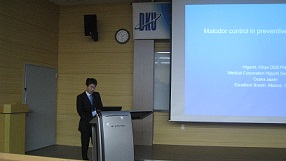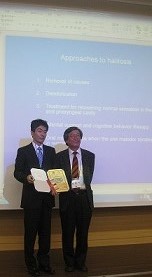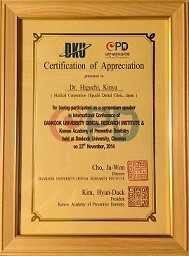malodor control in preventive dentistry
Kinya HIGUCHI(1), Shun-ichi HONDA(2)
(1)Higuchi Dental Clinic, (2)Honda Dental Clinic Med. Co〔Purpose〕
Most people hold more or less anxiety of bad breath and they have three types of sufferings. The first suffering is not to be understood their trouble of breath odor. The second is not to be able to apprehend a reason. The last one is not to be find how to cope. Medical professionals must give them a reply.
A lot of patients who sensed their oral malodor have visited our bad breath clinics. It is important to distinguish the bad breath and Oral Malodor Syndrome. The former means an offensive odor, while the later means distress as a result from having bad breath. Most of the patients kept good oral hygiene and their breath did not smell bad. Their pathology was classified as physiological halitosis. Abnormal intraoral sensation and anxious behaviors of others made them conscious about their malodor and there was a need to solve this problem for them. They have less offensive odor and more serious anxiety about the oral malodor than the patients who have pathological halitosis.
We developed a new system of treatment for physiological oral malodor as
follows. 1) Removal of causes. 2) Deodorization. 3) Treatment for recovering
normal sensation in the oral and pharyngeal cavity 4) Mental support and
cognitive behavior therapy. 5) Oral maintenance when the oral malodor syndrome
is in remission. The behavior therapy, above all else, is critical. We
externalize their problems with a diagnostic chart and an assessment sheet.
It is easy to establish a model of preventive dentistry through the treatment of oral malodor syndrome because patients strongly feel advancement of QOL when the oral malodor syndrome is in remission. These patients will pay more attention to oral health and continue to have oral maintenance.
Higuchi, Kinya DDS PHD Higuchi Dental Co. Med. Osaka Japan
|
 |
|
 |
|
講演後、議長と記念撮影
|
|
記念品の表彰状
|
|
















 ひぐち歯科クリニック
ひぐち歯科クリニック